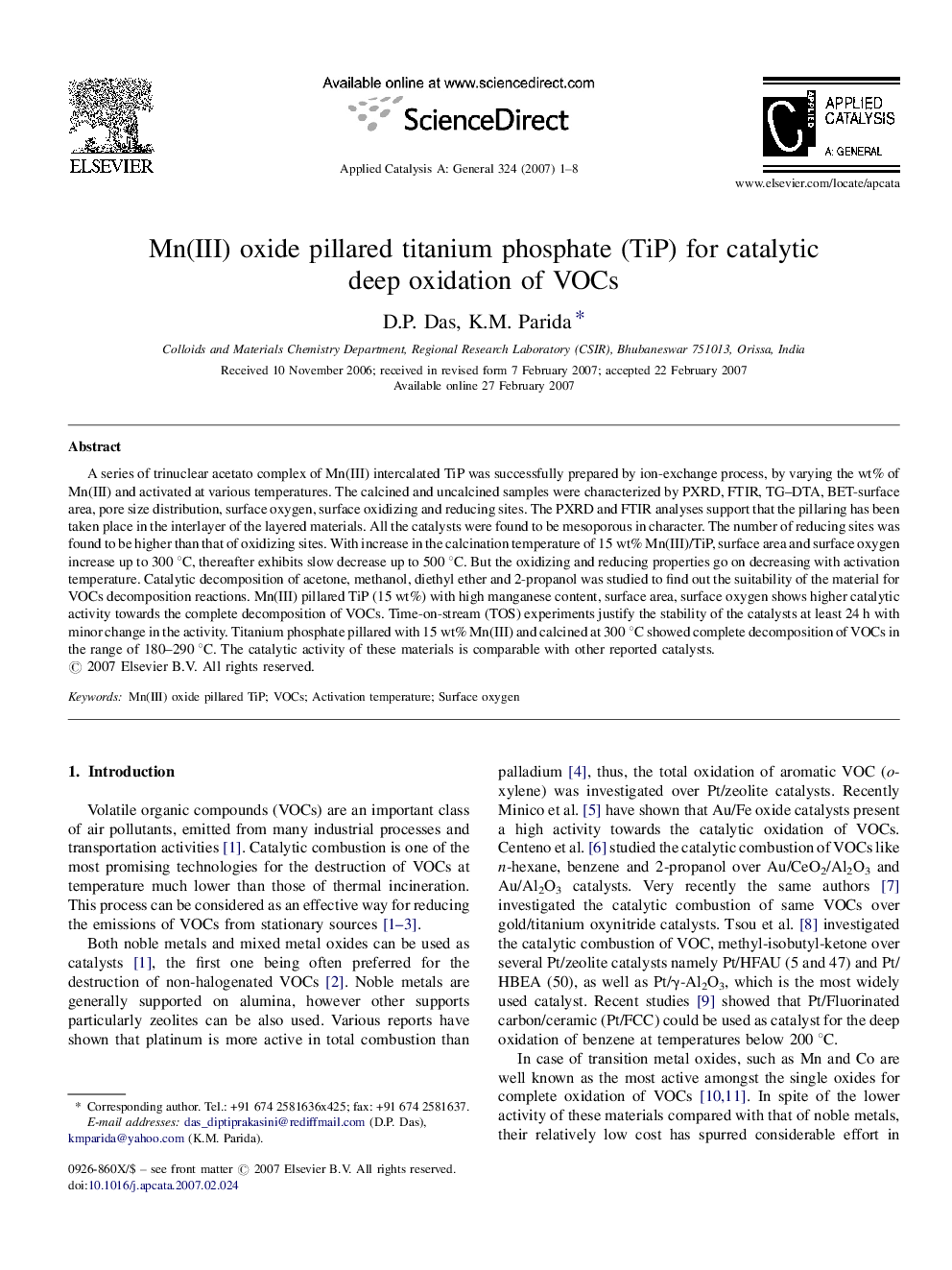| Article ID | Journal | Published Year | Pages | File Type |
|---|---|---|---|---|
| 44371 | Applied Catalysis A: General | 2007 | 8 Pages |
A series of trinuclear acetato complex of Mn(III) intercalated TiP was successfully prepared by ion-exchange process, by varying the wt% of Mn(III) and activated at various temperatures. The calcined and uncalcined samples were characterized by PXRD, FTIR, TG–DTA, BET-surface area, pore size distribution, surface oxygen, surface oxidizing and reducing sites. The PXRD and FTIR analyses support that the pillaring has been taken place in the interlayer of the layered materials. All the catalysts were found to be mesoporous in character. The number of reducing sites was found to be higher than that of oxidizing sites. With increase in the calcination temperature of 15 wt% Mn(III)/TiP, surface area and surface oxygen increase up to 300 °C, thereafter exhibits slow decrease up to 500 °C. But the oxidizing and reducing properties go on decreasing with activation temperature. Catalytic decomposition of acetone, methanol, diethyl ether and 2-propanol was studied to find out the suitability of the material for VOCs decomposition reactions. Mn(III) pillared TiP (15 wt%) with high manganese content, surface area, surface oxygen shows higher catalytic activity towards the complete decomposition of VOCs. Time-on-stream (TOS) experiments justify the stability of the catalysts at least 24 h with minor change in the activity. Titanium phosphate pillared with 15 wt% Mn(III) and calcined at 300 °C showed complete decomposition of VOCs in the range of 180–290 °C. The catalytic activity of these materials is comparable with other reported catalysts.
Graphical abstractMn(III) oxide pillared titanium phosphate was prepared by varying the weight percentage of trinuclear Mn(III) acetato complex. Modified as well as neat samples were characterized by PXRD, FTIR, TG–DTA, surface oxygen, redox sites determination and BET-surface area analysis. By varying experimental conditions it was observed that 15 wt% Mn(III) intercalated TiP activated at 300 °C show higher activity towards deep oxidation of representative volatile organic compounds (VOCs) such as acetone, methanol, 2-propanol and diethyl ether at low temperatures forming CO2 and H2O.Figure optionsDownload full-size imageDownload as PowerPoint slide
